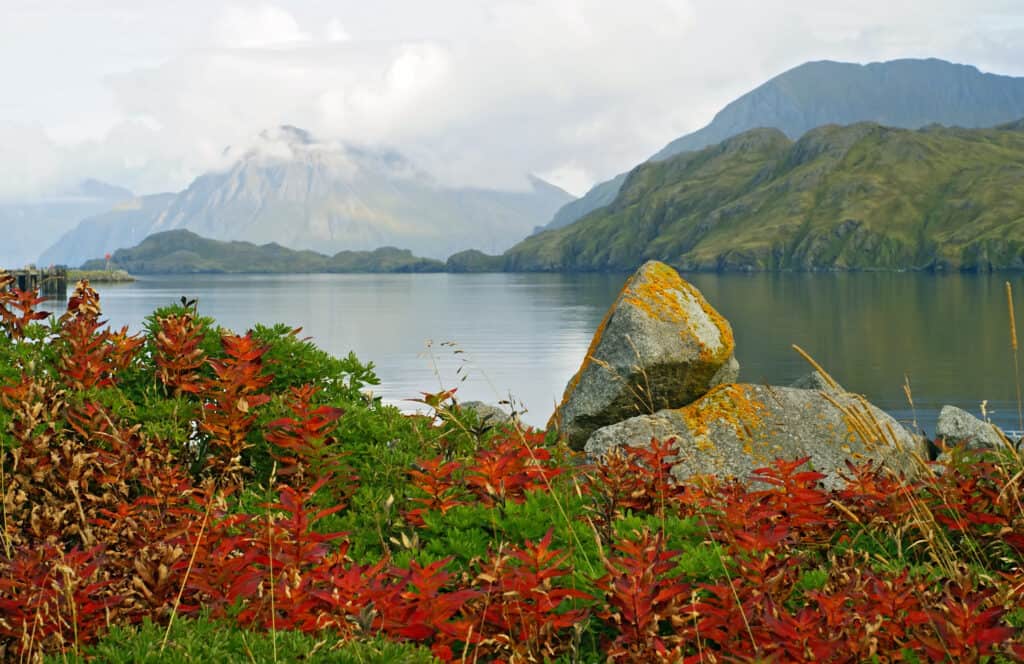Tlingit people live on the Pacific Northwest Coast of North America. Tlingit means “People of the Tides” in the Tlingit tribe’s language. Inland Tlingit live in southern Yukon and northwestern British Columbia. Numerous indigenous cultures inhabited Alaska for thousands of years, creating the Tlingit. Around 10,000 years ago, Tlingit-related civilization originated along the Skeena and Nass Rivers in Northern British Columbia. Tlingit maintained independence despite European smallpox and other infectious disease outbreaks. However, the 1862 Pacific Northwest smallpox pandemic killed 60% of Mainland Tlingit and 37% of Island Tlingit.
Name
When meeting new people, Tlingits will introduce themselves by their clan or household name. Until the arrival of the Tsimshian, indigenous people of the Pacific Northwest Coast, these southeast Alaskans lived under a moiety system (divided into two parts). However, they are no longer called moieties, but phratries which is a grouping of clans instead. The three tribes that made up the Coastal Tlingit were the Taku Tlingit along the Taku River, the Chilkoot Tlingit, and the Chilkat Tlingit along the Chilkat River and on the Chilkat Peninsula.
Location

The Tlingit live all over Alaska and the Yukon Territory.
©photomatz/Shutterstock.com
The Tlingit dominated a huge territory from the Portland Canal north to the coast of Alaska, southeast of the Copper River delta. The Alaska-British Columbia boundary is here. The Tlingit dominated the Alexander Archipelago apart from the southernmost tip of Prince of Wales Island and its surroundings, where the Kaigani Haida migrated before European explorers arrived.
The Coastal Tlingit tribes, who dominated one of the mountain passages into the Yukon interior, were the Chilkat, Chilkoot, and Taku Tlingit. The Alsek, Tatshenshini, Chilkat, Taku, and Stikine rivers flowed through the Coast Mountains and the Saint Elias Mountains into the Pacific, where the Tlingit lived. Because of their frequent travel up these rivers, the Tlingit traded with and married within Athabascan tribes. Due to their frequent travel and commerce, several large Tlingit populations developed near the Atlin, Teslin, and Tagish Lakes, whose headwaters come from the Taku River.
The current Tlingit area is hard to identify for many reasons. First, the Tlingit are distributed across the US-Canada border, and they lack reservations. Also, there are intricate legal and political difficulties, and there is a lot of population mobility. Atlin, Taku River Tlingit, Teslin, Teslin Tlingit Council, Carcross, and Carcross/Tagish First Nation are all Interior Tlingit communities in Canada.
Population and Language
At the turn of the 21st century, population estimates indicated approximately 22,000 Americans could trace their roots back to the Tlingit people. However, a recent count found that the global population of Tlingits was 16,771. In 2016, the membership numbered over 24,000.
The Tlingit people of Western Canada and Southeast Alaska speak the Tlingit language, a branch of the Na-Dené language family. Tlingit has a sophisticated grammar and phonology, with several phonemes that are unique to it and thus absent from virtually all other languages. It is estimated that there are between 200 and 400 native Tlingit linguists in the US and another 100 in Canada.
Tribes, organizations, and linguists in Southeast Alaska are devoting significant resources to revitalization initiatives that aim to preserve and sustain the Tlingit language and culture. Tlingit language programs can be found at the University of Alaska Southeast, the Goldbelt Heritage Institute, and the Sealaska Heritage Institute, in addition to community classes in Klukwan and Angoon.
Beliefs
Traditional Tlingit religion and philosophy reflected a very well-organized intellectual and religious system but were never formally codified. Animists at heart, Tlingit hunters would purify themselves in rituals before setting out on an expedition. Traditionally, shamans were men who served as healers, weather forecasters, hunters, fortune tellers, and protectors from witches. Tlingit belief centers on the concept of reincarnation, which is true for both humans and animals.
When Christianity was introduced to the region, the Tlingit belief system quickly began to disintegrate. As a result of the failure of their shamans to treat Old World diseases like smallpox, most Tlingit people converted to Orthodox Christianity between 1886 and 1895. Some said they thought that by switching to Eastern Orthodox Christianity, they could avoid adopting the Presbyterian way of life. Some modern-day Tlingits youth are rediscovering and reembracing their tribal religions and worldviews as a source of motivation, safety, and a sense of self.
Culture
Tlingit culture values family. Kindness, good manners, and wealth are all signs of “good genes” and aristocratic descent. Tlingit culture combines art and spirituality into nearly every element, including decorating and imbuing everyday goods like cutlery and storage containers with spiritual and historical traditions.
Tlingit culture has two moieties: Raven and Eagle. These are organized into many clans and lineages or house groups. The Tlingit have a matriarchal kinship structure that passes assets and hereditary positions down the maternal line. Totem poles, boats, feasting dishes, dwelling posts, tapestries, jewelry, and other crafts feature these tribes’ heraldic crests.
To indicate their clan and moiety, clan dwellings featured front-facing patterns and totem poles. Early board dwellings reportedly lacked screws, adhesives, and other fasteners. Today, Tlingit clan houses are cedar plank structures. A foundation allows residents to keep their belongings under the floors.
Up Next:
The photo featured at the top of this post is © iStock.com/Daniel Mark Robertson
Sources
- Tlingit Indian Fact Sheet, Available here: http://www.bigorrin.org/tlingit_kids.htm
- Alaskan Nature, Available here: http://www.alaskannature.com/tlingit.htm
- National Park Service, Available here: https://www.nps.gov/sitk/learn/historyculture/the-tlingit.htm
Thank you for reading! Have some feedback for us? Contact the AZ Animals editorial team.







